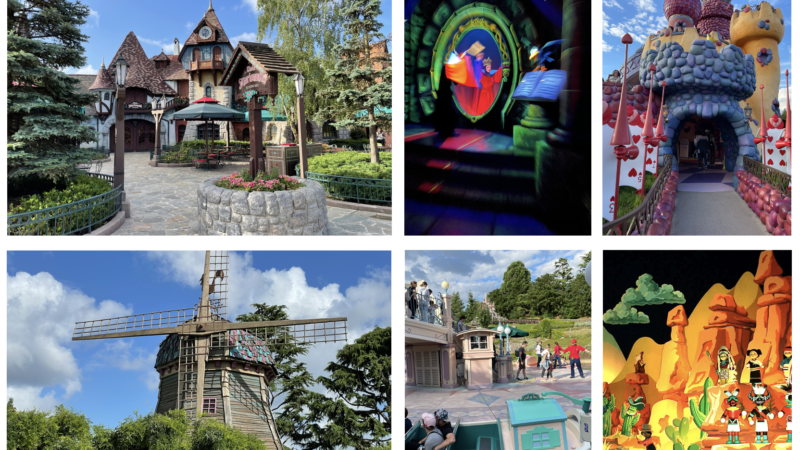Understanding Change From The Enchanted Tiki Room

One of the most timeless classics at the Disney parks is Walt Disney’s Enchanted Tiki Room. It is one of the only attractions within the parks that carry Walt’s name. And yet, as venerable as this attraction is, it offers many insights into change management. One might not think of change and the tiki room in the same sentence. But alas, there is quite a lot in terms of change. We look not only at those changes, but what we can learn about the phases of change, and how they relate to your own organization. Change happens everywhere, and that includes your workplace. Understanding that change helps us to better embrace the future, even if the Enchanted Tiki Room seems like the more unfuturistic attraction of all.

But even before it premiered, the concept behind the Enchanted Tiki Room evolved. Recall that the original concept was to have a trifecta dining offering with a themed dining/bird show sandwiched between The Plaza Pavilion and the Tahitian Terrace (both of which are gone). Perhaps the only reason this show survived is because it removed the dining option. And yet, it’s tiki aesthetic would eventually give birth to Trader Sam’s Enchanted Tiki Bar at the Disneyland Hotel and Trader Sam’s Grog Grotto and Tiki Bar at Disney’s Polynesian Resort.

And let’s not forget that while the dining went away, this experience would lead to multiple sponsors (more change) that would lead to the infamous Dole Whip–a concoction almost more popular than the Enchanted Tiki Room.
So, again, change has been happening from the beginning.
When Walt Disney’s Enchanted Tiki Room opened at Disneyland, it represented an advancement unique to anything ever quite imagined. Kids were already familiar with the idea that their future would be filled with robots like on Lost in Space or The Jetsons. But no one probably thought that the first consistent application before a mass market would be a robot in the form of a bird, much less a flower or a tiki idol.

But that’s what occurred in 1963, and as we say, the rest is history. From that moment we would come to see a menagerie of Audio-Animatronic creatures in the form of singing bears, swashbuckling pirates, goulish ghosts, singing dolls, monstrous dinosaurs and tall singing shamans. The effect was amazing. Audiences were completely amazed with a “how did they do it?” admiration.

Well, Walt Disney and his team did it with a lot of wire, hydraulic cylinders, and some analog systems. But he mostly did it with creativity, open-mindedness, and a determined sense not to repeat himself. He himself would acknowledge, “It’s just another dimension in the animation we have been doing all our life.”

That new dimension came from a life time of continually trying new projects and new approaches to the work he did.
Of Disneyland, he spoke of it never being completed. What he was really talking about was change. He believed that change was essential to staying successful and vibrant. On Disneyland’s 10th anniversary he noted: “I just want to leave you with this thought, that it’s just been sort of a dress rehearsal and we’re just getting started. So if any of you start resting on your laurels, I mean just forget it, because…we are just getting started.”
True to form, when Walt Disney World opened in 1971, things did change. Added were new shows and attractions like The Mickey Mouse Revue and The Country Bear Jamboree, a park of greater size and proportion and detail, and a resort community to compliment it. But aside from a name change and an altered preshow, The Tiki Room looked pretty much the same way when it arrived on the scene in Florida.

So imagineers were excited to try something different in 1997, while cherishing all that was good with the original. In came The Enchanted Tiki Room—Under New Management. And with that change in management has come years of controversy as to how successful that change has been. Now, this article is not a retread of those arguments. I personally find the version of the show to be awkward in its closing number. And I remember very well that people were walking out during the Baracolle number in the original show, which explains why that number is no longer in the Anaheim show. Both shows have their good points and bad points.

So rather than go down that route, I’m proposing that the next time you see this show, you see it in terms of managing change. For this show has some excellent points to make about how change occurs within organizations, how we deal with that change, as well as how we get through it. “Change” can be defined as a process of going from one form or situation to another. Those in organizations seeking to become more successful know that some change is inevitable if they are to keep up with the ongoing needs and demands of those they serve. As mentioned earlier, even Walt knew that.
At about the same time Walt was celebrating the 10th anniversary of Disneyland, a man named Bruce Tuckman developed a classic model of change management back in 1965 that helps people understand the cycle of undergoing change. His model suggests four different stages:

- Forming: Learning about the changes, along with its opportunities and challenges.
- Storming: Where conflict occurs as a result of the changes being imposed.
- Norming: When teams find ways to adjust to the changes being made.
- Performing: Where teams come together to achieve at a greater level.
So let’s walk through The Enchanted Tiki Room—Under New Management, and see how those forms appear. If you don’t recall the show, or if you haven’t seen it, here it is.
Now with that refresher, let’s take a look at how these phases play out in the show:
Forming. This begins even prior to the show, where William and Morris, Iago and Zazu’s agents, give insight to the changes being made and to the politics of change. Inside, the birds and cast of the Tiki Room begin to go through their normal routine, when they are interrupted by the arrival of the new owners. This is the moment when they realize that change will occur. It’s here they learn of the new structure for how the team will move forward under the owners of Zazu and Iago. Bruceman notes that in this phase supervisors (like Iago) become very directive as they set down the change that’s occurring to how the work will proceed.

Storming. This is usually the more chaotic moment of change, when people are experiencing chaos and are trying to figure out how to get through the change. In the show, this is easy to identify, because a storm literally unfolds before us. The goddess Uh-Oa (perhaps the ultimate Union representative), arrives to remind management that the forces of nature cannot be fooled with. She strikes Iago as a reminder not to make trivial those things that are working well for the tiki room.

Norming. The team begins to adjust the show to make it work in a more natural fluid manner. In the Still of the Night suggests their efforts to heal and come together as a whole. They then move to a rap version of their original song to suggest the transition they are seeking to make to become more relevant. Iago recognizes this, and sees the advantages to building on the strengths they already bring as a cast to the show.

Performing. With the cast in sync for how they should move forward, they invite everyone to “Get on their Feet” and celebrate. Representing how the entire cast is in sync is the appearance of the Bird Mobile with the girls in unison. Everyone joins in on this high-end concluding number that celebrates all that is enchanted in the Tiki Room.

Note that Tuckman later added a fifth stage, called Adjourning. This, too, is seen as the guests are invited in a magical trick to face the door and “disappear” to the tune of Heigh Ho. Iago makes his adjournment, as well. If you didn’t stay behind before, know that his closing remarks centered on heading over to The Hall of Presidents for a nap.
More phases of change have come to The Enchanted Tiki Room, for good or bad. Sometimes we direct change, and sometimes change is directed at us.
A Change In 2011 the Godess Uh Oa a fire broke out. This resulted in changing back to an edited version of the original show. Here is what that looks like:
In 1999 Tokyo Disneyland created The Enchanted Tiki Room: Now Playing “Get the Fever!” This was replaced in 2008 with Stitch Presents Aloha e Komo Mai!
From 2016 to 2017 Marvel released an Enchanted Tiki Room comic book series.
In 2018 the former Aladdin’s Oasis next to Disneyland’s original Enchanted Tiki Room became home to The Tropical Hideaway. This casual eatery combined Tiki Room and Jungle Cruise aesthetics, with Rosita, a cockatoo, who has been missing from the show since day one.
If there’s one thing for certain, The Enchanted Tiki Room will always be in a state of becoming, whether it’s improving the show with LED lighting, creating new merchandise to sell, or even adding additional attractions. This is a fan favorite that has lasted for decades, and with the right kinds of changes, it will keep being so. The trick is to make the right changes, at the right time, in the right way.
It’s helpful to understand the process people go through when they adjust from one change to another. While Iago wanted to manage change, Zazu seeks to work with others in leading for change. As leaders, we must understand the dynamics and phases of change, and support others in going through that process. Forcing change on others in directive, controlling, manipulative ways only puts egg on your own face. Embracing change but doing so in an environment of creativity and support only serves to create the magic.
Souvenirs for Your Own Organization
Consider the following issues as they relate to building change.
- Is change good to our organization? If so, why? If not, why not?
- What changes do we need to make in order for us to become successful? What is the current form we’re in and what is \the form we are trying to become?
- What does change look like when we undergo forming, storming, norming, & performing?
- What chaos, however minimal, may we experience in getting to where we need to be organizationally?
- Are you leading change or just managing change.





